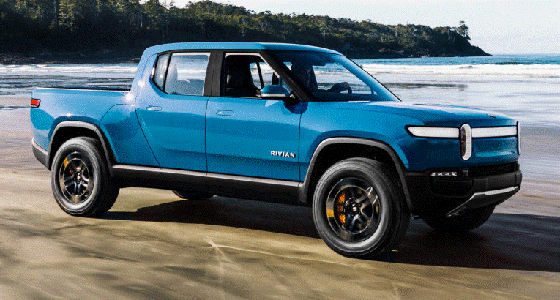Dear Reader, The last few days presented a perfect example of the stark contrast between bleeding-edge approaches to research and development and the “old way” of doing things. No, I’m not talking about the tragic drama of Intel’s fall compared to companies like NVIDIA and Advanced Micro Devices (AMD). And I’m not talking about the swath of up-and-coming semiconductor companies that I track so closely. I’m referring to space… the final frontier. Over the weekend, NASA fired up the core stage of its new rocket, the Space Launch System (SLS). This is a project that has been under development now for more than a decade – and all at a cost of more than $17 billion to U.S. taxpayers. The SLS is supposed to be the spacecraft that returns us to the Moon by 2024, as well as enables journeys even farther afield. The test was critical in preparation for what would have hopefully been its first mission to space this November. Sadly, it failed. The engines were supposed to remain ignited for a full eight minutes. NASA had to shut it down after just one minute due to a critical component failure. What makes this particularly painful is that this critical test failure comes after a long string of other failures, delays, cost overruns, and disappointments. Yet during this same window, we see a picture of not only what SLS should have been, but something far more impressive. Days ago, SpaceX successfully returned its Cargo Dragon spacecraft from the International Space Station (ISS). This was the company’s first official cargo resupply mission. In addition, It has already enabled two successful launches of astronauts to the ISS on prior missions. And just hours ago, SpaceX launched its seventeenth Starlink mission on its Falcon 9 rocket carrying 60 satellites. This will put the number of Starlink satellites in orbit at around 950 – by far the largest satellite constellation deployed in history. Here’s the cooler part. This was the eighth time that SpaceX used the exact same booster. Its goal is to reach 10 launches with the same exact rocket. This is one of the reasons that SpaceX can launch payloads into space at a fraction of the cost of a typical NASA launch. Core technologies from the shuttle era would cost about $1 billion a launch. SpaceX pulls it off for less than 10% of that price. And just to show off, SpaceX landed the booster in heavy winds on a floating platform on a rollicking ocean. Nailed it… again. The Falcon 9 Booster’s Landing 
Source: Twitter All hope is not lost, though. I’m actually optimistic. With SLS out of the picture, SpaceX is a far more viable and reliable option with its Falcon Heavy rocket – the same rocket that launched a Tesla into space two years ago! Compare that with the SLS, which can’t even get off the ground. SpaceX’s approach to rocket design, materials, propulsion, reusability, and software systems is unmatched in the industry. Needless to say, these events are remarkably bullish for SpaceX, and for that matter the 2024 mission. And if SpaceX were a publicly traded company, its stock chart would also be on its way to the moon. Now let’s turn to today’s insights… | Recommended Link | | GRAB A PEN AND PAD… Jeff Brown says YOU can now get set up to invest in billion-dollar tech unicorns… BEFORE their IPO on the Nasdaq or NYSE. How? With a simple “Pre-IPO Code” you plug right into your brokerage account. To prove it, Jeff Brown is giving away “Pre-IPO Codes” for free. | | | -- | The latest development from OpenAI… We talked about how Silicon Valley was buzzing over the commercial launch of OpenAI’s GPT-3 text generator last August. At its simplest level, GPT-3 can complete our sentences as we type. Anyone using Microsoft Outlook has likely seen GPT-3 in action. We start typing an email, and the artificial intelligence (AI) offers to finish our sentences for us. But GPT-3 can do so much more. It can write content based on input from a human. In this way, GPT-3 has written technical manuals as well as short stories. That’s what got the Valley so excited. Well, OpenAI has followed up on GPT-3 with new AI software that is equally impressive. The new AI is called DALL-E. And it can generate images from text descriptions. Have a look: DALL-E Image Generation 
Source: OpenAI At the top of this image, we can see the text input typed into DALL-E: “an armchair in the shape of an avocado” and “an armchair imitating an avocado.” And sure enough, DALL-E produced 30 unique images that depict a chair shaped like an avocado. What strikes me is how creative these images are. None of these are stock images. The AI created them from scratch based on its understanding of the text provided. Remarkable. WARNING for Anyone with a 401(k) or IRA And DALL-E can also produce sketches based on a picture. Look at these: DALL-E’s Sketches 
Source: OpenAI The repeated image in the first and third rows is an AI-generated image of a cat. The images in the second and fourth rows are sketches that DALL-E produced based on the picture provided. Notice how the picture is the same across the board. But each of DALL-E’s sketches are completely different. This has obvious applications in the field of design. Whether it’s designing new products, creating new animations, or producing art, DALL-E can help generate unique and creative ideas. In a rut with no new ideas coming to mind? Just describe what you’re looking to create and have DALL-E provide some out-of-the-box “thinking” to get you back on track. And in the big picture, this is a great example of how AI is now able to iterate and produce different conceptual approaches to a single problem… just like humans can. This will have incredible ramifications in terms of technological development. Once we have AIs that can perform designated tasks perfectly all day, every day, we will have opened the door to immense productivity gains that we cannot fathom today. And if applied wisely, AI will allow us to eliminate scarcity, cure all human disease, and create a world of abundance that we will hardly recognize. Here’s the best part – it will all happen within this decade. It is coming far faster than we think. | Recommended Link | | You're Invited to Freedom 2021 Are you looking for a new and exciting way to invest? Are you willing to step outside your comfort zone? If so, Wall Street legend Teeka Tiwari would like to invite you to his first event of the year: Freedom 2021: A Lifetime of Wealth on IPO Day. In this massive livestream event, Teeka will detail his first-ever tech recommendation. You don’t want to miss this…
| | | -- | The new electric truck that will compete with the Ford F-Series… Electric truck startup Rivian Automotive is close to sealing the deal on a new funding round that will value the company at $27.6 billion. That’s a strong valuation for any private company. And here’s the kicker – Rivian has not shipped a single product in its history. We first talked about Rivian back in July of last year. This is the company that some are calling the “next Tesla.” I disagree. Rivian is working on electric trucks that resemble something like the traditional pickup trucks we know today. Rivian Electric Pickup 
Source: Rivian However, Rivian is not developing self-driving technology like Tesla. It is purely an electric vehicle (EV) company. Tesla, on the other hand, is first and foremost an AI company. Its software and battery technology are what make Tesla so valuable. The car itself is just the “shell” for all of its bleeding-edge technology. The No. 1 Tech Stock of 2021 For this reason, I see Rivian as more of a competitor to traditional pickup trucks. And that’s not a bad thing. According to Business Insider, the Ford F-150 has been the best-selling vehicle in the U.S. for over 43 straight years. Talk about an incredible run. This speaks to how consistent the demand for quality pickup trucks is in the U.S. And that’s the market Rivian is attacking with its electric trucks. Rivian will provide a comparable truck that will be far cheaper and easier to maintain than the F-150 and other trucks with an internal combustion engine. That’s because with EVs, regular maintenance goes away. There’s no oil to change or fluids to top off. There are no belts to replace. Indeed, there are comparatively very few moving parts at all in an EV. This is one reason why Rivian has commanded such a high valuation without selling a single truck. The demand for pickup trucks in the U.S. is always strong. And Rivian said that its first batch of trucks has already sold out. It will make its first deliveries this summer. The other reason Rivian is garnering investment at a $27.6 billion valuation despite zero revenues is that it has received orders for 100,000 delivery vans from Amazon. And Rivian is on track to begin fulfilling on these orders later this year. Revenues are coming… To me, Rivian’s valuation is an indication of how hot the EV space will continue to be in 2021. This is a start to a big year. We’ll keep a close eye on Rivian and its progress from here. It’s certainly a candidate to go public in the near future. | Recommended Link | | Where America Goes From Here (It's a Nightmare) Our country is falling apart. And it’s about to get much worse. The siege of the Capitol… the riots and protests… the political division… that’s all nothing compared to what’s coming next – as soon as hours from now. The most important thing you must do, right away, is this… Protect your wealth while you still can. | | | -- | Yet another incredible application for CRISPR… We will wrap up today with another big development from the world of CRISPR genetic editing technology. It seems like we are talking about a new application for CRISPR every other week now. For the sake of new readers, CRISPR is like software programming for DNA. It allows us to “edit” genetic mutations that cause many diseases. Ultimately, CRISPR will help us cure all human disease of genetic origin. And a team of scientists at Harvard just demonstrated how CRISPR can be used to cure progeria. This is a heartbreaking disease that causes premature aging. The average life span of children with progeria is only 14 years. But there is hope. Progeria is caused by a single genetic mutation. And that potentially makes it an easy mutation to correct. The team at Harvard used a form of CRISPR called base editing to “correct” this mutation in mice with progeria. Using base editing, the team essentially went in and “flipped” the mutated gene back into the proper gene to restore health. It’s almost like magic. As a result, the median life span of the mice doubled. And here’s the best part – the scientists didn’t correct every single mutated gene in the mice. Instead, they only fixed 10-60% of the mutated genes. And this still produced a dramatic improvement in life span. This development took the market by storm. And it is one reason why the top publicly traded CRISPR stocks popped earlier this month. Since the genetic mutation that causes progeria is easy to identify, it is easy to envision this approach working well in humans. Once a child is diagnosed with progeria, the single mutation can be corrected with CRISPR base editing technology, which would likely cure the disease completely. We will put an end to progeria forever. Amazing! I expect we’ll see Phase 1 clinical trials some time within the next 24 months. There is an unmet need, and this presents a potential cure for a terrible disease. Regards, Jeff Brown
Editor, The Bleeding Edge P.S. I have asked my publisher to keep a replay of our Pre-IPO Code Event from last week up through Friday. For those who missed it, this is the event in which I unveiled one of the new investment strategies we will focus on at Brownstone Research this year. It is all about how to acquire shares in the most exciting private companies before they go public. And given the strength of the IPO market and the companies lined up to go public in 2021, I believe this strategy will help investors accelerate their portfolio gains tremendously this year. What’s more, this new strategy is open to all investors. It does not require us to be accredited investors. Nor does it require any investment minimums. It is private investing made simple. For readers who missed us last week, please tune in to the replay of our Pre-IPO Code Event before it comes down on Friday. You can find it right here.
Like what you’re reading? Send your thoughts to feedback@brownstoneresearch.com.
In Case You Missed It… “The Wall Street Legend” Who Picked Apple in 2003 – and Bitcoin in 2016 – Shares No. 1 Pick for the 2020s… Picking the right “investment of the decade” can transform your life… Microsoft in the ‘80s… Amazon in the ‘90s… Apple in the 2000s… Bitcoin in 2016... Any one of these could have made you a millionaire many times over. Starting with very little. Today, the Wall Street legend who picked the last two “investments of the decade”… months (even years) before his peers… will finally reveal his new No. 1 pick for the 2020s. It’s not 5G, artificial intelligence, or the internet of things. The answer will surprise you. And, for those who take early action, it could lead to an eventual $1.6 million payout. See No. 1 Pick. 
|
No comments:
Post a Comment